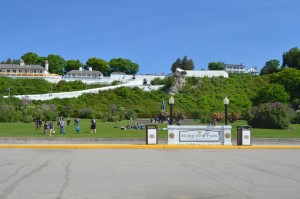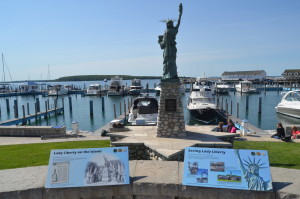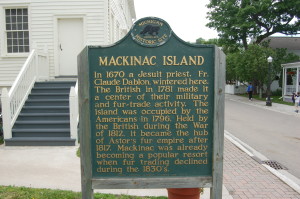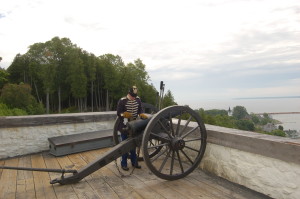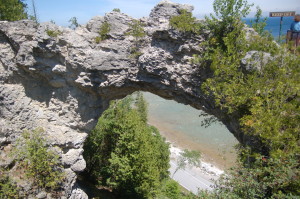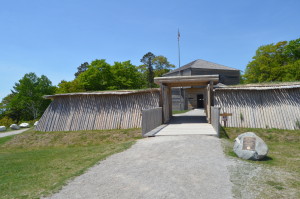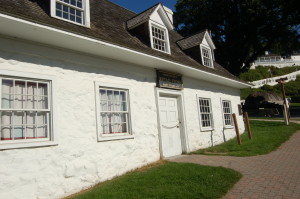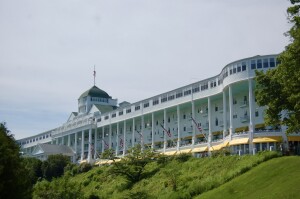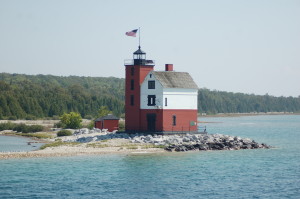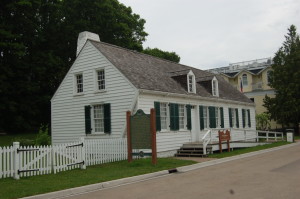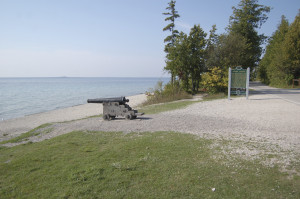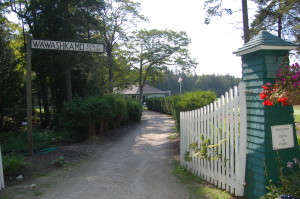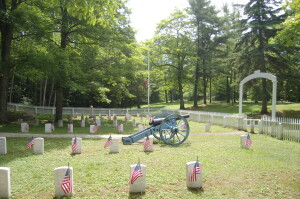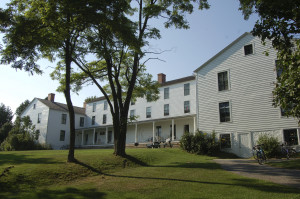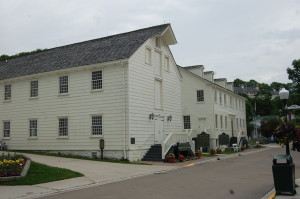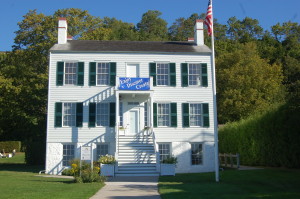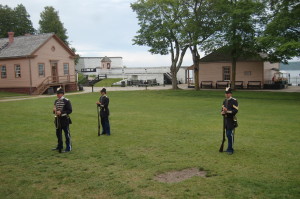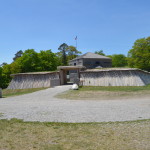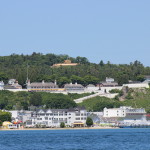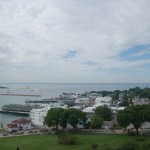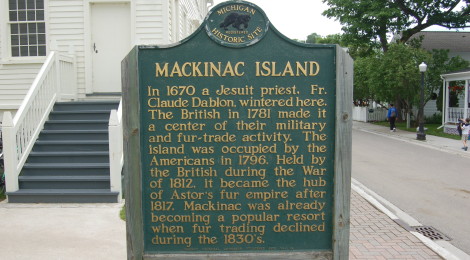
Mackinac Island: Best Historic Small Town in America?
Michigan cities have always been well-represented in the 10best.com Reader’s Choice Polls for Best Small Towns. The nominees for Best Historic Small Town, Best Small Town for Adventure, Best Small Town Cultural Scene, Best Coastal Small Town, Best Small Town Cultural Scene, and Best Small Town for Shopping were recently announced and it was a bit of a surprise to only see two Michigan cities in the running. Michigan had no representation in the contests for Best Coastal Small Town and Best Small Town for Adventure, two areas where we had success before. Traverse City (Best Small Town Food Scene) and Mackinac Island (Best Historic Small Town) will try and continue Michigan’s strong showing in 10best contests. Today we will take a look at the case for Mackinac Island as Best Historic Small Town by pointing out the can’t-miss historical sites you can visit there.
Mackinac Island’s description on 10best.com reads: “One of the last car-free destinations in the U.S., Mackinac Island, sandwiched between Lake Michigan and Lake Huron, seems trapped in the past, but in the most delightful way. Accommodations consist of white colonnaded turn-of-the-century hotels, while the horse-drawn carriage remains the favored form of transportation. With 80 percent of the island occupied by protected state parkland, those looking to explore the outdoors will find plenty of opportunity for hiking and biking.” We definitely agree with all of this – one of the main reasons people visit Mackinac Island each year is to “travel back in time” to when things were simpler.
Here’s a look at some of the top historic draws on Mackinac Island:
Fort Mackinac – One of the island’s most recognizable landmarks, Fort Mackinac sits on top of a bluff where its white limestone walls stand out amongst the green tops of trees below. First constructed in the 1780s, it was originally built for the British to replace Fort Michilimackinac on the mainland. The fort changed hands several times during the War of 1812 and after, and was also a center for the fur trading industry and the early headquarters for Mackinac National Park (second in the country after Yellowstone). It is now open for tours and is one of the most-visited sites on the island. Find out more at https://www.mackinacparks.com/parks-and-attractions/fort-mackinac/.
Arch Rock – The island’s most famous natural landmark is a natural limestone arch that dates back to the Nipissing post-glacial period (7,500 years ago). It stands 150 feet above the Lake Huron shoreline and continues to be a popular spot for tourists. Other natural formations on the island include Sugarloaf, Skull Cave, and Devil’s Kitchen.
Fort Holmes – This fort at the highest point on the island uses earthen mounds as walls. It was reconstructed to its 1817 appearance in 2015 and continues to draw visitors with its amazing views of the island from 300 feet above Lake Huron.
American Fur Company Store – The Michigan historical marker here describes the history that happened within this building’s walls: “On June 6, 1822, Alexis St. Martin (1804 ~ 1889), a French Canadian, was accidentally shot in the stomach at this American Fur Company retail store. Dr. William Beaumont M.D.(1786 ~ 1853), army surgeon at Fort Mackinac nursed him back to health. Although St. Martin’s physique was not impaired, his stomach wound refused to heal, leaving an opening through which the doctor could observe the digestive process. Beaumont convinced St. Martin to become the subject of a medical study of digestion and wrote several articles on the findings from these experiments. St. Martin married and fathered seventeen children. He out-lived Beaumont by twenty-seven years. The Michigan State Medical Society acquired the retail store in 1947 and, after building this memorial to Dr. Beaumont in 1953, gave the structure to the Mackinac Island State Park Commission.”
Grand Hotel – Michigan’s most famous hotel dates back to 1887 and has hosted numerous presidents (Truman, Kennedy, Ford, Bush, Clinton) and famous figures (Thomas Edison, Mark Twain). It boasts the world’s largest porch, and was featured in the 1980 film Somewhere in Time starring Christopher Reeve and Jane Seymour. Find out more and book your stay at this historic hotel: https://www.grandhotel.com/.
Round Island Lighthouse – It’s hard to miss the red and white brick lighthouse on Round Island on the ferry ride to Mackinac Island. Standing 57 feet tall, this lighthouse was constructed in the 1890s in the schoolhouse style.
Biddle House – From the historical marker in front of the house: “This house is probably the oldest on the island. Parts of it may date from 1780. A deed to the property upon which a $100 down payment was made in 1822 by Edward Biddle was obtained by him in 1827 from the then owner. Biddle was a cousin of the Biddles of Philadelphia and a leading trader and citizen. For years he lived here with his Indian wife. The house is an example of the Quebec rural style.” It is now open as a museum, with admission tied to a Fort Mackinac entry ticket.
British Landing – A lone cannon marks the spot where British troops landed in 1812. The soldiers stationed at Fort Mackinac were unaware that the War of 1812 had began, and Fort Mackinac was surrendered without a shot being fired.
Wawashkamo Golf Club – Michigan’s oldest unchanged links course, Wawashkamo dates back to 1898! It is open to the public, find out more at https://wawashkamo.com/.
Post Cemetery – The soldiers of Fort Mackinac, their families, and local dignitaries are all buried at this cemetery a half-mile from the fort. Headstones here are well preserved considering some of them date back to the 1880s.
Mission House – Built in 1825 as a boarding house for Native American schoolchildren, this historic house near the Mission Point Resort now serves as summer housing for island workers.
Stuart House – This 1817 house was originally the home of American Fur Company agent Ramsay Crooks. His assistant Robert Stuart took over his post a few years later. Now home to the City Museum, “the Robert Stuart House is a two-story, Federal style structure with side gables sitting on a brick foundation. It is built with hand-hewn timber frame and clad with clapboards. The roof is shingled and features gabled dormers. The front facade has a two-sided stairway leading to a small entry porch. The entrance door is flanked by sidelights and pilasters, and the multiple windows have small panes.” Find out more about visiting at http://www.cityofmi.org/stuart-house-24/.
Richard & Jane Manoogian Art Museum – Originally the Indian Agency headquarters and later a school, this building was used by famous author Henry Rowe Schoolcraft during his time as an agent. It was re-opened to the public in 2010 as a three-story art museum focused on the culture and legacy of Mackinac Island.
Mackinac Island is currently in eighth place as of this writing. You can vote for it once per day at https://www.10best.com/awards/travel/best-historic-small-town/mackinac-island-michigan/. Voting continues until noon on October 25th and winners will be announced on November 5th.

